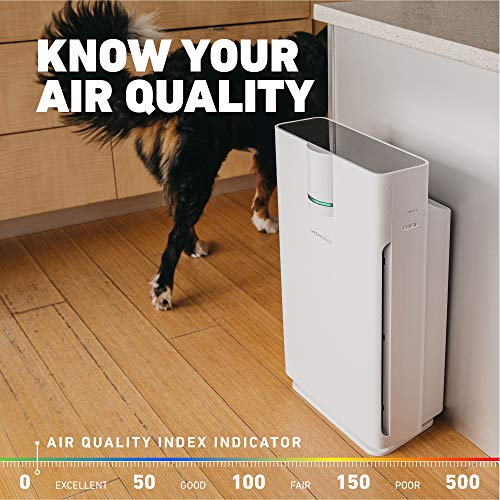Disclosure: This post may contain affiliate links, meaning we get a commission if you decide to make a purchase through our links, at no cost to you. Please read our disclosure for more info.
Allergies can ruin all the fun when you’re trying to enjoy the great outdoors. If you’re not careful, they can also ruin your indoor air quality as well.
According to one study, over 60 million people suffer from allergy symptoms in the U.S. alone! Allergies are a serious nuisance and they force sufferers to spend much time and money trying to find relief.
Are you worried about allergens? Do you have family members with respiratory issues? Follow these residential indoor air quality tips so you can breathe easily.
In This Post:
1. Remove Carpeting
Most people aren’t aware that carpeting can be a very big contributor to allergies and bad indoor air. Unfortunately, carpeting traps pollen, dirt, dust, and pet dander that are sources of bad air quality.
One of the best indoor air quality solutions that allergy sufferers can use is to remove the carpet in their homes. Replacing carpet with a hardwood or tile floor can cut your allergens down significantly.
2. Check for Mold
Indoor air quality is also negatively affected by moisture and mold. If you live in a humid climate, your area is likely prone to mold and mildew. Out of doors, it may be tolerable, but if it gets inside your home, mold can quickly make you sick.
Check your home for mold and mildew, including behind the drywall, under flooring, and in the basement. Special attention should be given to the bathroom and kitchen since water leaks can spring up around sinks, toilets, and tubs.
The garage can also be a center point of mold growth. If you haven’t already, find the best dehumidifier to prevent further mold growth.
If mold is a problem in your area, consider investing in a good dehumidifier that continuously takes the moisture out of the air. You want to avoid breathing mold spores and keep your home interior as dry as possible.
3. Use a Furnace Filter
Some homeowners have their air ducts cleaned on a regular basis to remove lint and other residues. In addition to residential air duct cleaning, you can install filters on your furnace to prevent allergens from spreading through your home.
A quality filter will strain out pet dander, dust, pollen, and other irritants. To keep your furnace from pumping allergens through your A/C and heat vents, install a new allergy filter every 1-3 months.
4. Use a Dehumidifier
There are many benefits to using a dehumidifier for indoor air quality as well. A functioning dehumidifier takes moisture out of the air. Without a dehumidifier the level of moisture in the air can become extremely high, leading to mold, mildew, and discomfort, and can even damage home and office furnishings. A lack of proper dehumidification can also lead to an increase in unwanted pests, allergens, and bugs.
Regular dehumidifiers in a crawl space can help with removing moisture and improve your home’s air quality.
5. Keep Your Pets Clean
Residential indoor air quality testing has shown that having an indoor pet introduces allergens into the home. If your pet is making you sneeze, consider making some changes to lower the allergens in the air.
You can bathe them more frequently, keep their hair trimmed short, brush them often, and use pet shampoo that lowers pet dander. Some pet parents use free-standing air filters to help remove dander and pet fur from the home environment.
6. Fill Your House With Plants
To improve your indoor air quality, you can also fill your home with plants that improve indoor air quality. Besides bringing the outdoors in, plants give off oxygen and enhance well-being.
Monitor Your Residential Indoor Air Quality
Have you been wondering how to improve your residential indoor air quality? We recommend giving the ideas in this article a try. The most important thing you can do is continue to monitor your inside air and make changes as needed. Even small changes can help you find allergy relief.
If you’ve enjoyed this article about improving your home’s environment, check out our other blog articles.








